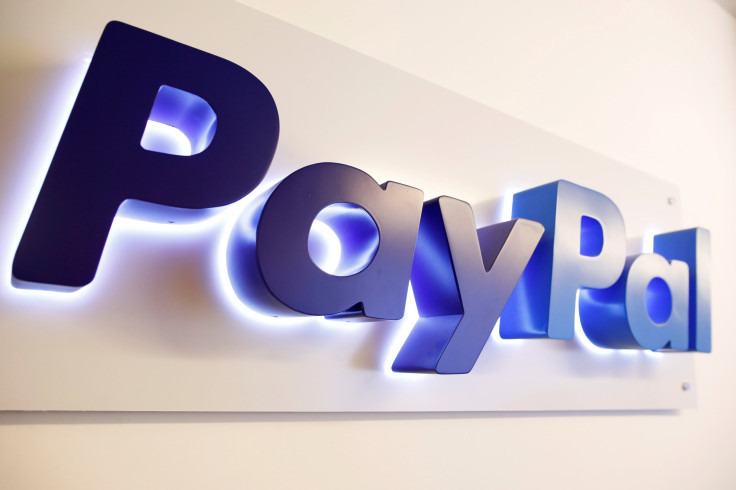2 Growth Opportunities For PayPal

Shares of PayPal Holdings (NASDAQ:PYPL) have soared 193% since separating from eBay in 2015, as the PayPal brand is becoming synonymous with e-commerce. But with 277 million customers and growing, the company is just getting started.
PayPal's Venmo is growing phenomenally well, and it's on course to contribute meaningfully to PayPal's top and bottom lines down the road. PayPal is also partnering with some of the world's largest e-commerce platforms, which could benefit the company's growth similarly to how the partnerships with credit cards and banks did over the last few years.
Here's why these are two significant growth catalysts to keep an eye on.
1. Venmo monetization is coming along
The widely used peer-to-peer payment app has been a crown jewel of PayPal's payments platform. Venmo's total payment volume jumped 73% year over year last quarter and is on pace to reach $100 billion this year.
However, Venmo has been a drag on the company's margins. Customers are highly engaged with Venmo, but the app doesn't charge a fee to send someone money as long as payments are made out of the cash balance in the account. To monetize the app, management has implemented features such as Instant Transfer and offered a Venmo credit card that are gaining traction.
Venmo generated an annual run rate of $300 million in revenue in the first quarter, up from $200 million in the previous quarter. But this is just the beginning of a three-phase plan to make Venmo a profitable service.
During the last conference call to discuss the first quarter, CFO John Rainey explained that the new monetization features had stopped the bleeding on the bottom line from the growth of Venmo. The next phase is to get Venmo to break even, but that will take longer than a few quarters.
More importantly, Rainey explained that the long-term plan "is to really put our foot on the pedal and see the same type of profitability in [Venmo] or more perhaps that we do with PayPal and some of our other services."
Here's why that statement is a big deal. PayPal currently generates an operating margin of about 15% across the entire company. So according to Rainey, Venmo could earn the same margin. That means if Venmo reaches an annual run rate of, let's say, $1 billion in revenue, the service could be on track to generate as much as $150 million in operating income in the future.
It may take longer than a few years to get Venmo's margins up to par with PayPal's other services, but this at least gives us an idea of how much profit Venmo could contribute to the company as the service grows over time. It's going to take a while for Venmo to contribute meaningfully to PayPal's bottom line, but with the service growing faster than the rest of the company, it's a growth catalyst to pay attention to.
2. Investments in fast-growing e-commerce platforms
One of the reasons for PayPal's growth has been its growing roster of partnerships with 22 million merchants that offer PayPal as a checkout option. To highlight how important those partnerships have been for the company, PayPal recently said that 15% of its total payment volume, or $90 billion, came from its top 20 marketplaces and partners over the last year, and that small slice coming from the top 20 is growing faster than the rest of the company at 39% year over year.
PayPal also has invaluable partnerships with all major credit cards to give its users more payment choices. With those deals in the bag, management is shifting gears and now pursuing partnerships with some of the world's fastest-growing e-commerce platforms, including Uber Technologies, Facebook's Instagram, and MercadoLibre (the "eBay of Latin America").
The partnership with Uber could be huge. The ridesharing company's gross bookings increased 121% between 2016 and 2018 to reach a whopping $41.5 billion, and this is just scratching the surface of Uber's growth potential.
Uber is working on a digital wallet service to keep its customers' cash within the Uber platform, and PayPal will be along for the ride. PayPal recently invested $500 million in Uber, which will allow the digital payment provider to collaborate with the ridesharing company on its digital wallet service.
Doubling down on network effects
So how big could these partnerships be for PayPal? Let's think about PayPal's competitive advantage.
The underlying advantage that explains the growth in Venmo and the growth of PayPal's core services is network effects. The more customers and merchants that join PayPal, the more ubiquitous PayPal's brand becomes, which attracts more customers and partners.
What PayPal is doing with the Facebook, MercadoLibre, and Uber partnerships is, in effect, doubling the power of its network effect. For example, president and CEO Dan Schulman noted that PayPal now has the benefit of serving 500 million users because of its partnership with MercadoLibre.
Also consider that Uber made more than 10 billion trips for its ridesharing customers last year, and that number has grown exponentially since 2012.
The deal with Uber, along with other partnerships with Facebook's Instagram and MercadoLibre, shows PayPal positioning as the payment option of choice for potentially hundreds of millions of users across these fast-growing platforms. These partnerships significantly expand the number of transactions that PayPal can capture over the long term.
Network effects are fueling the growth of Venmo and PayPal's other services. Management knows it better than anyone and is making decisions to expand that advantage and dominate the global digital payments market.
This article originally appeared in The Motley Fool.
Randi Zuckerberg, a former director of market development and spokeswoman for Facebook and sister to its CEO, Mark Zuckerberg, is a member of The Motley Fool's board of directors. John Ballard owns shares of PayPal Holdings. The Motley Fool owns shares of and recommends Facebook, MercadoLibre, and PayPal Holdings. The Motley Fool recommends eBay and Uber Technologies. The Motley Fool has a disclosure policy.




















